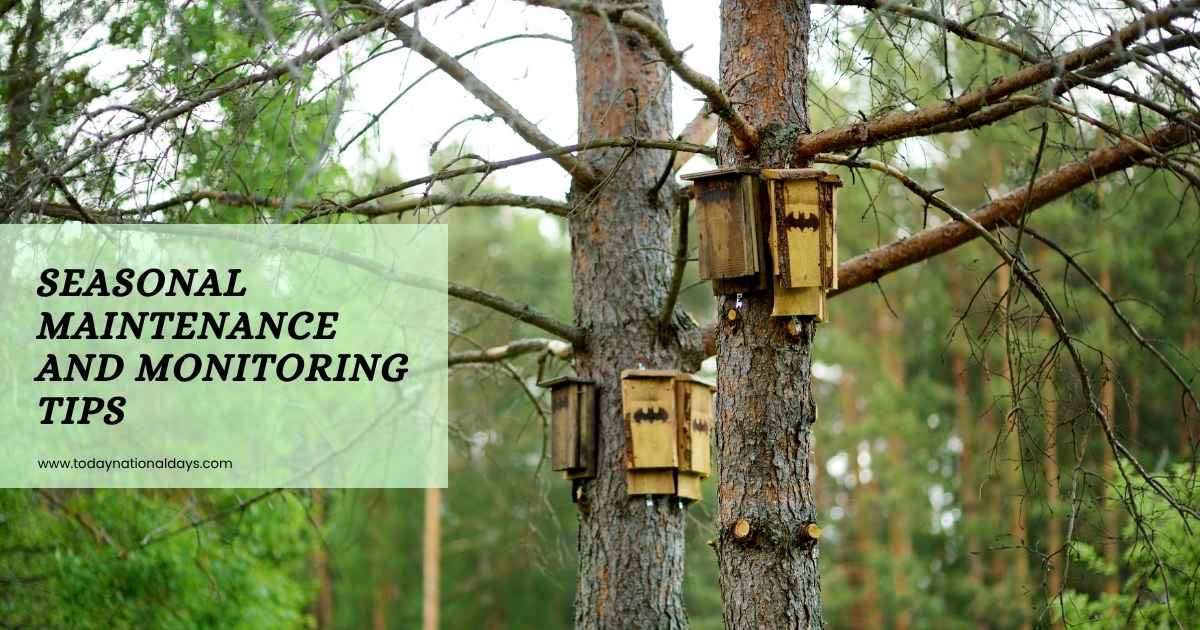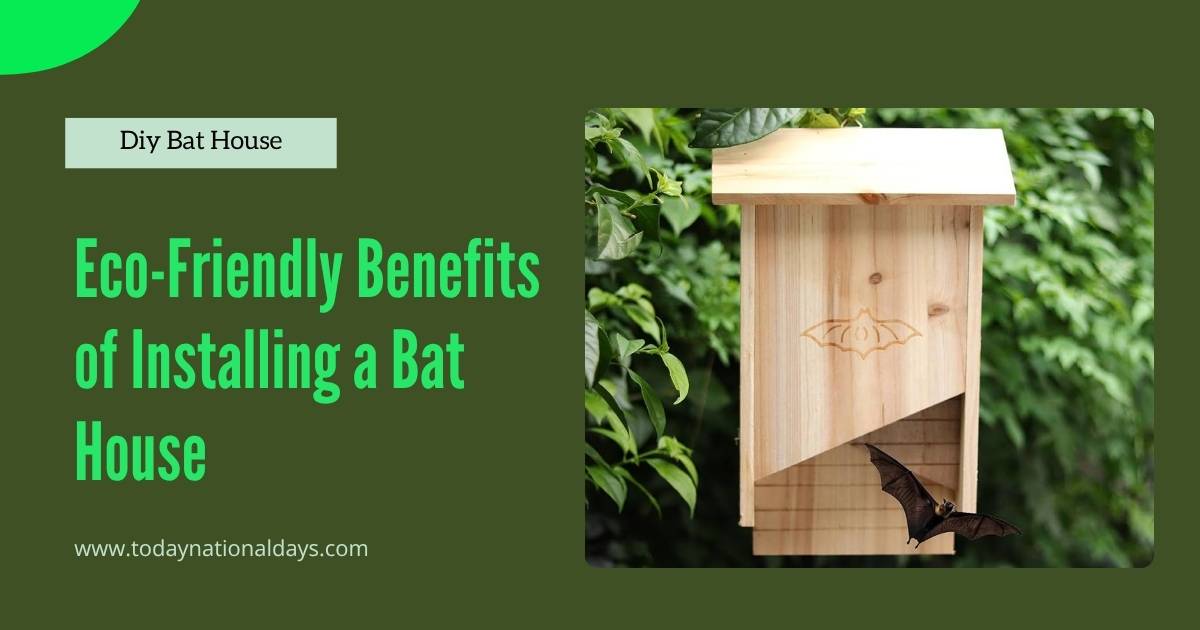
DIY bat house plans are a smart and sustainable way to support local bat populations while naturally reducing insect pests in your backyard. In the USA, where mosquito-borne illnesses are a growing concern, many homeowners are turning to bat houses as an eco-friendly solution. These plans are designed to be functional, species-appropriate, and achievable for most skill levels, making them ideal for conservationists, gardeners, and DIY enthusiasts alike.
This comprehensive guide delivers high-quality, search-optimized content for readers seeking reliable, actionable information. Whether you’re a seasoned woodworker or a weekend hobbyist, you’ll find detailed instructions, design insights, and placement tips to ensure your bat house becomes a thriving roost. Let’s build with purpose—and precision.
How to Build a Bat House That Works: Design, Materials, and Dimensions
Creating a bat house that actually attracts bats requires more than just a wooden box. The design must mimic natural roosting conditions, provide thermal stability, and offer protection from predators. Here’s what you need to know:
1. Choose the Right Design
- A single-chamber bat house is ideal for beginners and small yards.
- Multi-chamber designs (2–4 chambers) are better for attracting maternity colonies.
- Interior surfaces should be rough or grooved to allow bats to cling and climb.
2. Select Appropriate Materials
- Use untreated, rot-resistant wood like cedar or exterior-grade plywood.
- Avoid pressure-treated lumber, which can be toxic to bats.
- Use galvanized screws and exterior-grade caulk to ensure durability.
3. Follow Optimal Dimensions
- Minimum width: 24 inches
- Height: 20–24 inches
- Chamber depth: ¾ inch spacing between panels
- Landing area: Extend 3–6 inches below the entrance
Proper ventilation is essential. Include a ½-inch horizontal vent across the front, about 6 inches from the bottom. Paint the exterior with non-toxic, dark-colored paint to retain heat—especially important in cooler climates like Canada.
Strategic Placement Tips to Maximize Bat Occupancy
Even the best-built bat house will fail if it’s placed incorrectly. Bats are particular about their roosting environment, so location is everything.
1. Height and Mounting
- Mount the bat house at least 12–20 feet above ground.
- Avoid trees—predators and shade reduce occupancy rates.
- Ideal mounting surfaces include poles, buildings, or sheds.
2. Sun Exposure
- Bat houses need 6–8 hours of direct sunlight daily.
- In northern regions, paint the house black to absorb more heat.
- In warmer areas like southern USA or Australia, use medium to dark brown.
3. Proximity to Water and Food
- Bats prefer roosts within ¼ mile of a water source.
- Nearby gardens, ponds, or wooded areas increase insect availability.
Avoid placing bat houses near bright lights or noisy areas. Once installed, it may take up to two years for bats to move in, so patience is key. Regularly check for wasp nests or damage, but avoid disturbing the interior.
Table of Recommended DIY Bat House Plans by Skill Level
| Plan Name | Skill Level | Chambers | Estimated Cost | Ideal Use Case |
|---|---|---|---|---|
| Basic Cedar Bat Box | Beginner | 1 | $20–$30 | Small yards, first-time builders |
| Multi-Chamber Condo | Intermediate | 3 | $40–$60 | Maternity colonies, rural areas |
| Rocket Box Design | Advanced | 4 | $70–$100 | High bat traffic zones |
| Pallet Wood Bat Shelter | Beginner | 1 | Under $15 | Upcycled materials, budget builds |
| Garden Pole Bat House | Intermediate | 2 | $35–$50 | Decorative and functional |
These plans are based on designs from reputable DIY blogs and conservation organizations. Each offers downloadable blueprints, material lists, and step-by-step instructions.
Common Mistakes to Avoid When Building Bat Houses
Many DIY bat houses fail to attract bats due to simple but critical errors. Here are the most common pitfalls and how to avoid them:
1. Incorrect Chamber Spacing
- Bats prefer tight spaces. Gaps wider than 1 inch make it harder for them to regulate body temperature.
- Use ¾-inch spacers between panels for optimal comfort.
2. Improper Ventilation
- Lack of vents can cause overheating or moisture buildup.
- Include a ½-inch vent across the front or sides, depending on the design.
3. Smooth Interior Surfaces
- Bats need texture to grip and climb.
- Score the interior with horizontal grooves or attach plastic mesh.
4. Poor Placement
- Mounting in shaded or low areas reduces occupancy.
- Avoid placing bat houses on trees or near artificial lights.
5. Toxic Materials
- Never use treated wood, oil-based paints, or strong adhesives.
- Stick to water-based sealers and non-toxic finishes.
Correcting these issues can significantly increase your chances of attracting a bat colony. Many UK-based conservationists recommend testing your design with a thermal gun to ensure internal temperatures stay within the 80–100°F range.
Seasonal Maintenance and Monitoring Tips

Once your bat house is installed, ongoing care ensures it remains a safe and attractive roost. Here’s how to maintain it year-round:
- Spring
- Inspect for winter damage or water intrusion.
- Clean out any wasp nests or debris.
- Repaint or reseal if needed.
- Summer
- Avoid disturbing the house during peak roosting season.
- Observe from a distance at dusk to count emerging bats.
- Record activity in a logbook for future reference.
- Autumn
- Check for signs of wear before winter.
- If bats migrate, this is the best time for repairs.
- Ensure the structure is secure against wind and snow.
- Winter
- In warmer climates, bats may remain year-round.
- Avoid opening or moving the house during hibernation.
Regular maintenance not only extends the life of your bat house but also supports bat health and safety. In Australia, where bat populations face habitat loss, consistent monitoring has become a key part of community conservation efforts.
DIY Bat House Plans for Kids and Families
Building a bat house can be a fun and educational family project. Here are a few simplified plans and ideas suitable for younger builders:
-
Mini Bat Box Kit
- Pre-cut wood pieces with pilot holes
- Requires only a screwdriver and wood glue
- Great for school projects or scout groups
-
Paint-and-Hang Bat Shelter
- Assemble a basic box, then let kids decorate with non-toxic paint
- Add stencils of bats, stars, or moons for a whimsical touch
-
Observation Journal
- Encourage kids to track bat sightings and behavior
- Use binoculars and a flashlight with red cellophane to observe without disturbing
These projects teach children about biodiversity, nocturnal animals, and environmental stewardship. In Canada, many schools incorporate bat house building into science and ecology curricula.
Regional Considerations for Bat House Success
Different climates and bat species require slight adjustments in design and placement. Here’s a quick regional breakdown:
| Region | Paint Color | Ideal Mounting Height | Common Bat Species |
|---|---|---|---|
| Northern USA | Black | 15–20 ft | Little Brown Bat, Big Brown |
| Southern USA | Dark Brown | 12–15 ft | Mexican Free-Tailed Bat |
| UK | Dark Green | 12–18 ft | Common Pipistrelle |
| Canada | Black | 15–20 ft | Hoary Bat, Silver-Haired |
| Australia | Medium Brown | 10–15 ft | Gould’s Wattled Bat |
Always consult local wildlife agencies or bat conservation groups for species-specific guidance. Some regions may require permits or have protected species regulations.
Creative Bat House Designs That Blend with Your Landscape
A bat house doesn’t have to be an eyesore. With a little creativity, you can design one that complements your outdoor space:
- Rustic Cedar Finish
- Leave the wood natural or apply a clear, non-toxic sealant.
- Ideal for cabins, woodland gardens, or nature preserves.
- Modern Minimalist
- Use clean lines and matte black paint.
- Mount on a sleek metal pole for a contemporary look.
- Camouflaged Design
- Paint to match your siding or fence.
- Add faux shutters or trim to disguise it as a decorative feature.
- Themed Bat Houses
- Add a bat silhouette or moon cutout.
- Use stencils or woodburning tools for custom artwork.
These design ideas not only make your bat house more attractive but also encourage neighbors and visitors to appreciate its purpose.
Bonus: Bat House Blueprint Resources
If you’re ready to build, here are some trusted sources for free downloadable plans:
| Source | Type of Plans | Website |
|---|---|---|
| Bat Conservation International | Single & Multi-Chamber | |
| The Craftsman Blog | 3-Chamber Cedar Design | |
| Insteading | 20+ Plan Roundup | |
| The Spruce | Kid-Friendly Designs |
Eco-Friendly Benefits of Installing a Bat House

Building a bat house isn’t just a backyard project—it’s a small act of environmental stewardship with far-reaching impact. Here’s why:
- Natural Pest Control A single bat can consume up to 1,000 insects per hour, including mosquitoes, moths, and beetles. This reduces the need for chemical pesticides, which can harm pollinators and contaminate soil and water.
- Pollination and Seed Dispersal While insect control is their most famous trait, some bat species also play a role in pollinating plants and dispersing seeds. This is especially true in tropical and subtropical regions.
- Habitat Restoration As urban development continues to displace natural roosting sites, bat houses offer a safe alternative. They help maintain biodiversity and support local ecosystems.
In the UK and parts of Canada, conservation groups actively promote bat house installation as part of broader wildlife corridor initiatives. By participating, you’re contributing to a global movement toward ecological balance.
How to Monitor Bat Activity Without Disturbance
Once your bat house is up, you’ll want to know if it’s working. Here are safe, non-invasive ways to monitor bat activity:
1. Evening Observation
- Watch from a distance at dusk to see bats exiting the house.
- Use a red-filtered flashlight to avoid startling them.
2. Guano Collection
- Place a clean board or tarp beneath the house.
- Check weekly for bat droppings (guano), which resemble mouse droppings but crumble easily.
3. Acoustic Monitoring
- Use a bat detector to pick up ultrasonic calls.
- Apps and handheld devices are available for hobbyists and researchers alike.
Avoid opening the bat house or shining lights inside. Bats are sensitive to disturbance, and repeated interference can cause them to abandon the roost. In Australia, citizen science programs often use these methods to track bat populations and migration patterns.
Conclusion: Building a Better Backyard for Bats
DIY bat house plans offer more than just a weekend project—they’re a gateway to supporting biodiversity, reducing pesticide use, and connecting with nature. Whether you’re in the USA, UK, Canada, or Australia, the principles remain the same: build smart, place wisely, and respect the bats.
By crafting a bat house that meets their needs, you’re not only helping these misunderstood mammals—you’re also creating a healthier, more balanced environment for your entire community. So grab your tools, follow the plans, and give bats a reason to call your backyard home.






